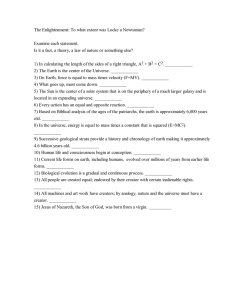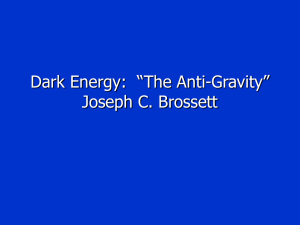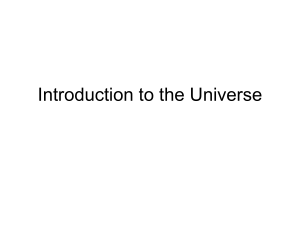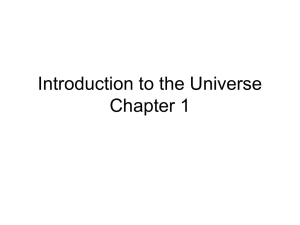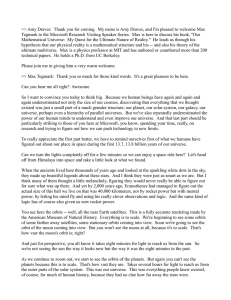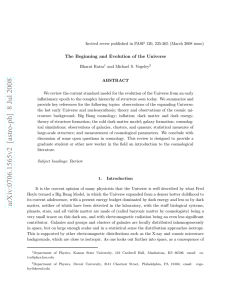The starry universe
advertisement
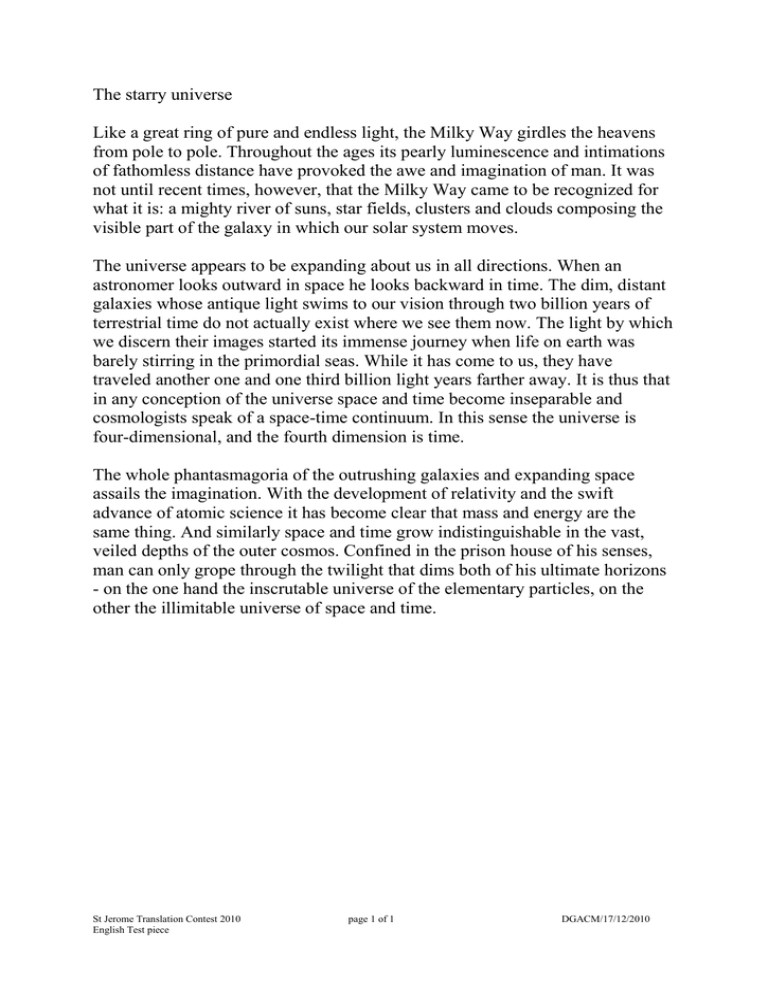
The starry universe Like a great ring of pure and endless light, the Milky Way girdles the heavens from pole to pole. Throughout the ages its pearly luminescence and intimations of fathomless distance have provoked the awe and imagination of man. It was not until recent times, however, that the Milky Way came to be recognized for what it is: a mighty river of suns, star fields, clusters and clouds composing the visible part of the galaxy in which our solar system moves. The universe appears to be expanding about us in all directions. When an astronomer looks outward in space he looks backward in time. The dim, distant galaxies whose antique light swims to our vision through two billion years of terrestrial time do not actually exist where we see them now. The light by which we discern their images started its immense journey when life on earth was barely stirring in the primordial seas. While it has come to us, they have traveled another one and one third billion light years farther away. It is thus that in any conception of the universe space and time become inseparable and cosmologists speak of a space-time continuum. In this sense the universe is four-dimensional, and the fourth dimension is time. The whole phantasmagoria of the outrushing galaxies and expanding space assails the imagination. With the development of relativity and the swift advance of atomic science it has become clear that mass and energy are the same thing. And similarly space and time grow indistinguishable in the vast, veiled depths of the outer cosmos. Confined in the prison house of his senses, man can only grope through the twilight that dims both of his ultimate horizons - on the one hand the inscrutable universe of the elementary particles, on the other the illimitable universe of space and time. St Jerome Translation Contest 2010 English Test piece page 1 of 1 DGACM/17/12/2010


